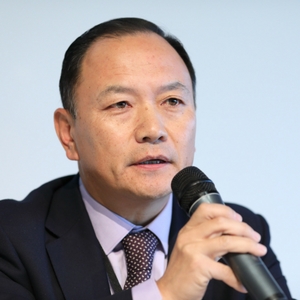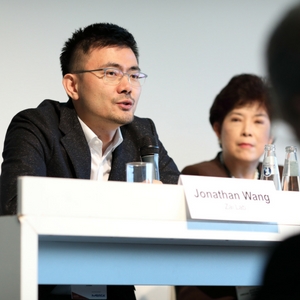China 2.0: Surprise reform from highest authorities. Is it real this time?

Not known for irrational exuberance, Chinese life science executives stopped just short of excitement at BIO-Europe® 2017 speaking about the unexpected news that came down from the nation's highest authorities in mid-October that China's FDA (CFDA) has reformed its rules for regulatory approvals.
"This is huge," said Darren Ji, who is the CEO for Elpiscience Pharmaceuticals and a Venture Partner with Lilly Asia Ventures. The regulatory changes, he explained, were mandated by the Central Party Office and the Office of State Council.
 "Never, ever in the history of China has reform for one specific sector, which was managed by a lower ministry, been mandated by two of the highest offices of the government. Everyone is saying these changes are here to stay, because no matter who is in charge of the ministries or sits on the committees, the policy has been set and the policy is here to stay," he said.
"Never, ever in the history of China has reform for one specific sector, which was managed by a lower ministry, been mandated by two of the highest offices of the government. Everyone is saying these changes are here to stay, because no matter who is in charge of the ministries or sits on the committees, the policy has been set and the policy is here to stay," he said.
The new regulations, that parallel the speeding up of processes at the US FDA, aim to accelerate approvals of medicines, open up bottlenecks for innovative treatments and create a major growth opportunity for Western pharmaceutical companies.
The topic was treated most fully at BIO-Europe during a panel session dedicated to opportunities in China where Ji was joined by executives from Zai Lab and the Simcere Pharmaceutical Group. It also came up in a session devoted to reviewing 2017 dealmaking highlights.
In that session Executive VP and Global Head of Business Development for BeiGene, Ji Li, welcomed what he called "surprising reforms" by CFDA that he suggested "means the agency is exposing domestic companies to international competition."
Session moderator Sam Ulin with ClearView Healthcare Partners greeted the news with cautious optimism, saying, "You can never underestimate how important the Chinese marketplace is for life sciences. Yet we have been saying that for 10 or 15 years without it rendering any demonstrative commercial success for any organization. Still the discussion today really highlighted the nature of the regulatory reform that combined with what is going on to actively reshape the healthcare infrastructure in China are going to rapidly change that marketplace. If there is any country that has shown it can take a centralized approach to becoming very relevant very rapidly, it is China."
In the China panel session, Ruediger Herrmann with the Corporate Life Sciences practice at Dechert LLP spelled out the details of the CFDA reform.
The CFDA issued a decision concerning the adjustment of Imported Drug registration which has three major implications on the evaluation and approval of innovative drugs and medical devices, he said.
First, synchronized declarations of research and development means that drugs in multi-regional clinical trials (MRCT) are now permitted to launch synchronized Phase I clinical trials inside and outside China.
Second, once the MRCT study arm conducted in China is completed, the applicant may directly apply for import marketing registration.
Third, for a clinical trial application for imported drugs, for a new drug application for improved new chemical drugs and for a new drug application for imported innovative biological products for therapeutic use, the CFDA removed the requirement of an existing marketing authorization in the country or region of the foreign pharmaceutical manufacture.
"Western companies should reconsider their global clinical trial strategy," said Herrmann. "The acceptance of overseas clinical trial data and optimization of imported drug marketing procedures will attract more multinational pharma companies and other overseas pharma companies to enter into the Chinese market."
Chinese companies already on the ground suddenly find themselves very well positioned to collaborate, and not compete with major pharma companies seeking to enter the Chinese market.
Joyce Pei, Executive Director with Simcere Pharmaceutical Group with headquarters in Nanjing, outlined the unmet needs in China for new and innovative therapies, starting with anti-cancer treatments. Where in the US 37 of 42 such treatments are available, only four are currently available in China.
"This therapeutic area is expected to grow at an 11% compound annual growth rate to reach from USD 120 billion to USD 135 billion in 2021," she said. Diabetes and autoimmune therapies will growth at even faster rates, each area coming close to the USD 100 billion revenue level by 2021.
Jonathan Wang is the VP heading Business Development for Zai Lab based in Shanghai, a company that he said, "is close to four years old, but with a management team that has been in China for many years, led by our CEO Samantha Du, who in 2015 was named as one of the top 10 women life sciences executives worldwide."
 In September, 2017 Zai Lab closed a NASDAQ IPO raising USD 115 million that will fund a pipeline loaded with assets licensed from GlaxoSmithKline, Sanofi, UCB, Bristol-Myers Squibb, Paratek Pharmaceuticals and Tesaro.
In September, 2017 Zai Lab closed a NASDAQ IPO raising USD 115 million that will fund a pipeline loaded with assets licensed from GlaxoSmithKline, Sanofi, UCB, Bristol-Myers Squibb, Paratek Pharmaceuticals and Tesaro.
"China has come to a unique moment," he said. "There are a lot of opportunities, conditions are very favorable for building a business around innovative medicine and partnering with Western companies."
Generics and biosimilars need not apply at Zai Labs, which is building manufacturing capacity at the Suzhou BioBay China Industry Park.
"Local players have inherent advantages, and pharma companies will need a local partner speaking the language and having manufacturing sites," said Li with BeiGene.
Meet and network with industry leaders like Darren Li and Jonathan Wang seeking global opportunities at China Showcase during Biotech Showcase.
